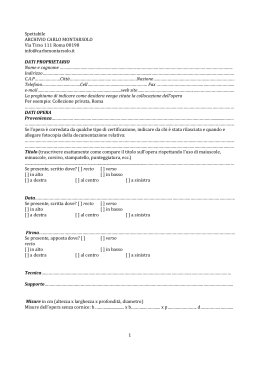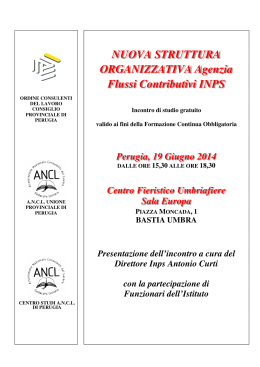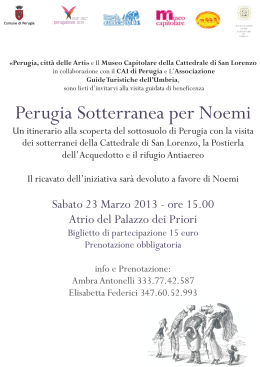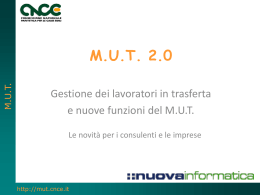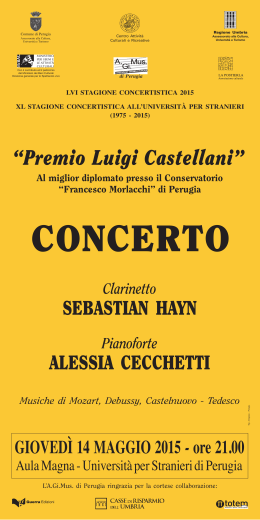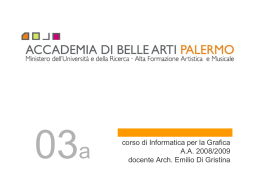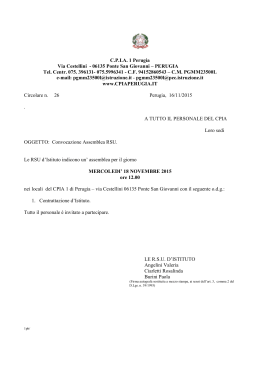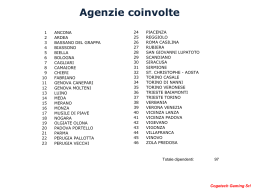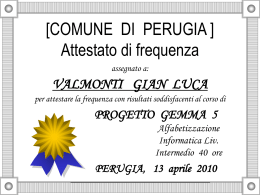ROBIN HALWAS LIMITED ● www.robinhalwas.com Di Porti, Camillo fl. Perugia 1526 Laude de le belle donne perusine composte per el magnifico Camillo di Porti Vicentino. Perugia, Girolamo Cartolari, 1526 (28 January) 4 OCTAVO (150 × 100 mm), (12)ff. signed A–C , not foliated or paginated. Woodcut frame enclosing title on folio A1 recto (140 × 95 mm), another woodcut depicting a putto rowing a skiff on folio B3 verso (105 × 80 mm). [title as transcribed above, within woodcut frame] A1 recto, Hieronimo Carthvlario a gl’incliti lettori A1 verso; Laude de le belle donne Perusine composte per el [corrected by pen to il] magnifico meser Camillo de [corrected by pen to di] Porti Vicentino A2 recto–B2 verso; Alle belle et valorose sopradette donne excusatione del lautore [fleuron] Sonetto B3 recto; [woodcut] B3 verso; Stantie de meser Democrito S.C. in laude de una de loro [fleuron] Stantia prima [–diciannove] B4 recto–C3 verso; Capitolo in Lode de gli occhi della sua donna C3 verso–C4 recto; Fine | Stampato in Perosia nelle Case de Girolamo | Cartholario Adi 28 de Genaio 1526 C4 recto; [blank] C4 verso. CONTENTS PROVENANCE Richard Heber (1733–1833) — Sotheby & Son, ‘Bibliotheca Heberiana’, London, 8 April 1835, lot 2745 (‘green morocco, rare’) — Pierre Berès, his sale by Pierre Bergé & Associés, ‘Fonds de la librairie Pierre Berès. Des incunables à nos jours. 4ème partie’, Paris, 17 December 2007, lot 11 Occasional contemporary pen corrections of text. Light stain on folio B1 recto, otherwise in excellent state of preservation. early nineteenth-century English green morocco; covers decorated by gilt frame, spine lettered in gilt. BINDING T of verse by ‘uno amoroso giouane meser Camillo di Porti gentihomo Vicentino’ (folio A1 verso) is representative of a type of popular literature published across Italy in the sixteenth century which seems to have been read almost out of existence. Often printed during the pre-Lenten carnival (February–March), the books celebrate in HIS VOLUME The Heber copy. Binding height 154 mm 1 ROBIN HALWAS LIMITED ● www.robinhalwas.com verse the women of particular towns; many are by authors otherwise unknown; all survive in very few copies. 1 Our book comprises two parts: ‘Laude de le belle donne Perusine’, seventy-five stanzas of terza rima in which the author pays homage to Ippolita Ranieri, Celantia Randoli, Margherita Baglioncella, Baptiste Baldeschi, Camilla Crispolti, Isotta Croglia, Leonora degli Oddi, Ilaria de Leone, Julia Venciolina (Vincoli?), Agnola Alessandri, among other women, some incompletely named; and ‘Stantie de Meser Democrito, S.C. in laude de una de loro’, nineteen stanzas of ottava rima, followed by a ‘Capitolo in Lode de gli occhi della sua donna’ in ten stanzas of terza rima. The contrasting styles of the two parts are noted in the preliminary address to the reader. For some unknown reason there was exceptional appetite in Perugia in the early 1520s for books of versi amorosi. Two publishers in particular, Baldassare Cartolari (the younger brother of Girolamo Carolari) and Cosimo Bianchini, fed the demand, issuing numerous editions of the works of Baldassare Olimpo da Sassoferrato and ‘Notturno Napoletano’, and in addition Giovanni Baldo’s Opera noua de dui nobilissimi amanti (1520), the playwright Francesco Belo’s Laberinto de amore (16 January 1524), and Filippo Baldacchini’s Prothocinio (1525). Baldassare Cartolari responded immediately to his brother’s edition of Di Porti’s Laude de le belle donne perusine, publishing on 7 February 1526 Giovanni Battista Percivalli’s Roccha Damore… expugnata da le castissime gentildonne Perusine, an imitative work referring to eight or more of the same women. 2 1 The on-going ‘Censimento nazionale delle edizioni italiane del XVI secolo’ (hereafter EDIT 16) locates Claudio Tolomei’s Laude delle donne bolognese (Bologna 1514) in a single copy (CNCE 67533); Giovanni Battista Dragoncino’s Stanze in lode delle nobil donne vinitiane del secolo moderno (Venice 1547) in four copies (CNCE 17776); Giuseppe Santafiore’s Lode de le nobili et illustri donne romane (Rome 1551) in a single copy (CNCE 71198; the 1552 reprint also in a single copy, CNCE 24665); Laude delle primarie donne della honorata città di Rimino et altri degni suggetti di varii et diversi auttori. Raccolti et impressi per Erasmo Virginio nell’anno MDLIII ([Rimini] 1553) in a single copy (CNCE 71297); Giulio Castellani’s Stanze in lode delle gentili donne di Faenza (Bologna 1557) in a single copy (CNCE 9958); and Canti cinque in lode delle gentilissime donne di Padoua, di cinque nobilissimi ingegni (Padua 1563) in four copies (CNCE 9000). See also Giusto Fontanini, Biblioteca dell’eloquenza italiana, edited by Apostolo Zeno (Venice 1753), II, pp.95–101: ‘Capo. VI. Canzonieri di Donne, e per donne illustri’. 2 No copy recorded by EDIT 16; two copies are in the British Library (shelfmarks 1071.d.3. (1.) and G.10939), and another in the Biblioteca Comunale Augusta, Perugia (shelfmark IN 339). The only copy known. Page height 150 mm 2 ROBIN HALWAS LIMITED ● www.robinhalwas.com The printer Girolamo Cartolari shared commercial interests with the Venetian publishers Nicolò Zoppino and Vincenzo di Paolo. In the years 1518–1525, he printed at least five books ‘ad instantia de Nicolo dicto Zopino & Vincenzo suo Compagno’, 3 and in 1523 Zoppino & Vincenzo printed a book for Cartolari. 4 There are intriguing coincidences in the typographic material utilized by Cartolari and Zoppino. Jeremy Potter observed that a woodcut title-page compartment with pointillé background used by Zoppino in 1521 and 1524 was copied by Cartolari in 1525; a woodcut title-page frame of arabesque ornament used by Zoppino in 1525 was copied by Cartolari in the same year; and a woodcut portrait (of Diogenes Laertius), apparently employed by Zoppino in 1521 and 1524, was copied by Cartolari in 1525. 5 It is therefore no surprise to discover that the woodcut of a putto in a skiff on folio B3 verso of our book is a copy of a block in Zoppino’s stock. The original was used by Zoppino and Vincenzo for their edition of Caio Baldassare Olimpo Alessandri da Sassoferrato’s Libro nouo damore chiamato Olympia published 24 March 1522. 6 The woodcut compartment used on the title (folio A1 recto) had been used by Cartolari for his edition of Vincenzo Oradino’s Opusculum in quo agit vtrum adiectio nouarum literarum italicae linguae aliquam vtilitatem pepererit published in May 1525. 7 No Venetian antecedent for it has sofar been identified. XVI… Notizia bibliografica’ in Biografia degli scrittori perugini e notizie delle opere loro (Perugia 1828–1829), I, pp.283–309. No copy has yet come to the attention of the editors of EDIT 16 and we trace no copy in other online and printed library catalogues accessible to us. REFERENCES Johann Georg Theodor Grässe, Lehrbuch einer allgemeinen Literaturgeschichte aller bekannten Völker der Welt (Dresden & Leipzig 1852), III, pp.394–395; Jacques-Charles Brunet, Manuel du libraire et de l’amateur de livres, fifth edition (Paris 1860–1865), VI, col. 2745 (citing the Heber copy only); Jules Gay, Bibliographie des ouvrages relatifs à l’amour, aux femmes, au mariage, edited by J. Lemonnyer (Paris 1894–1900), III, col. 778 (citing the Heber copy); Lodovico Frati, La Donna italiana nei più recenti studi. Seconda edizione con aggiunte (Turin 1928), p.125 (format mistaken as quarto) Our book is not cited by the principal authority on early Perugine printing, Giovanni Battista Vermiglioli, author of Di alcuni libri di rime Italiane rari… pubblicati in Perugia (Perugia 1821) and ‘Della tipografia de’Cartolarj in Perugia nella prima metà del secolo 3 1518: Pandolfo Collenuccio, Opera noua composta per miser Pandolpho Coldonese intitulata Philotimo (EDIT 16, CNCE 14856); 1521: Angelo Poliziano, Stanza per la giostra (Jeremy Potter, ‘Nicolo Zoppino and the book-trade network of Perugia’ in The Italian Book 1465–1800, edited by Denis Reidy, London 1993, p.143); 1524: Girolamo Candorfini, La guerra de Lombardia con la bataglia de Grellasco (CNCE 8885); 1524: Girolamo Candorfini, Libretto de bataglia nel quale se contiene la venuta de francesi a la impresa de Milano (CNCE 63062; Potter 1993 p.146); 1525: Francesco Tromba, Guerre battaglie nuouamente fatte in Prouenza, a Marsiglia & a Oses (CNCE 63063; Potter, op. cit., p.146). 4 Girolamo Benivieni, Amore (EDIT 16, CNCE 5323; Potter, op. cit., pp.143–144). 5 Compare Potter, op. cit., pp.147–152, figs.2– 3 (EDIT 16, CNCE 52381 and CNCE 23861, woodcuts reproduced), figs.4–5, 6–7; see also, Neil Harris’ comments in The Library 20 (1998), pp.152–154. 6 ‘Un Amour voguant sur un carquois en guise d’esquif,’ reproduced in Victor Masséna, prince d’Essling, Bibliographie des livres à figures vénitiens… 1469–1525 (Paris 1909), II, p.430; for the edition, see Max Sander, Le Livre à figures italien depuis 1467 jusqu’à 1530 (reprint Nendeln 1969), no. 5165; Tammaro De Marinis, Il castello di Monselice; raccolta degli antichi libri veneziani figurati (Verona [1941]), p.82. 7 See reproduction in EDIT 16, CNCE 52417. 3
Scarica
